Each year, we witness new and unexpected digital trends that lay the foundations for the future of marketing. And even in a year as tumultuous as 2021, we’ve not been disappointed. If anything, the digital marketing trends in 2022 are set to be some of the most groundbreaking to date.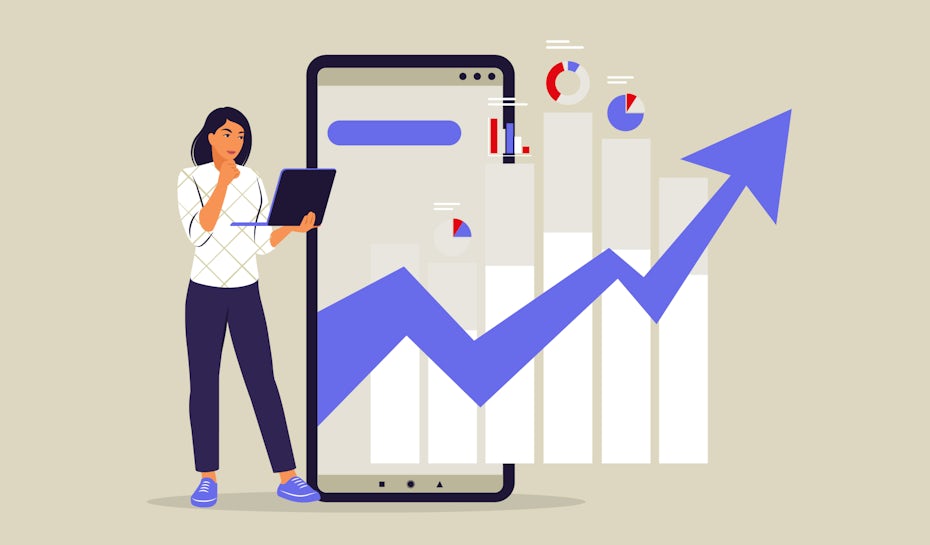 Illustration by OrangeCrush
Illustration by OrangeCrush
The start of the year saw the continuing rise of TikTok, which has now taken over all other platforms as the leading social media channel among Gen Z users. NFTs and cryptocurrencies continued their momentum, sparking conversations about the future of finance. Google announced it would phase out third-party cookies by 2023, leaving advertisers and digital marketers under two years to navigate new channels to reach their target consumers. And, most recently, Facebook changed its name to Meta in a nod to the company’s ambition to embrace the metaverse, a 3D virtual world.
All in all, there’s a lot of new and exciting developments in the digital world that will impact the way we communicate with our audience. To help digest and navigate the year ahead, we’ve broken down the key digital marketing trends to be aware of in 2022.
Here are the 9 digital marketing trends to get ahead of in 2022:
—
Short, DIY videos
Tell a real story
Focus on your audience
Privacy, transparency and trust-building
Personalization
Content segmentation
Conversational marketing and quality interactions
Artificial intelligence in digital marketing
NFTs and crypto in social media ecommerce
1. Short, DIY videos
TikTok has shifted the landscape of social media away from status updates and curated photo grids in favor of short video posts. It didn’t take long for other platforms to jump on the bandwagon, with Instagram launching its Reels feature and Youtube leaning into ‘shorts.’
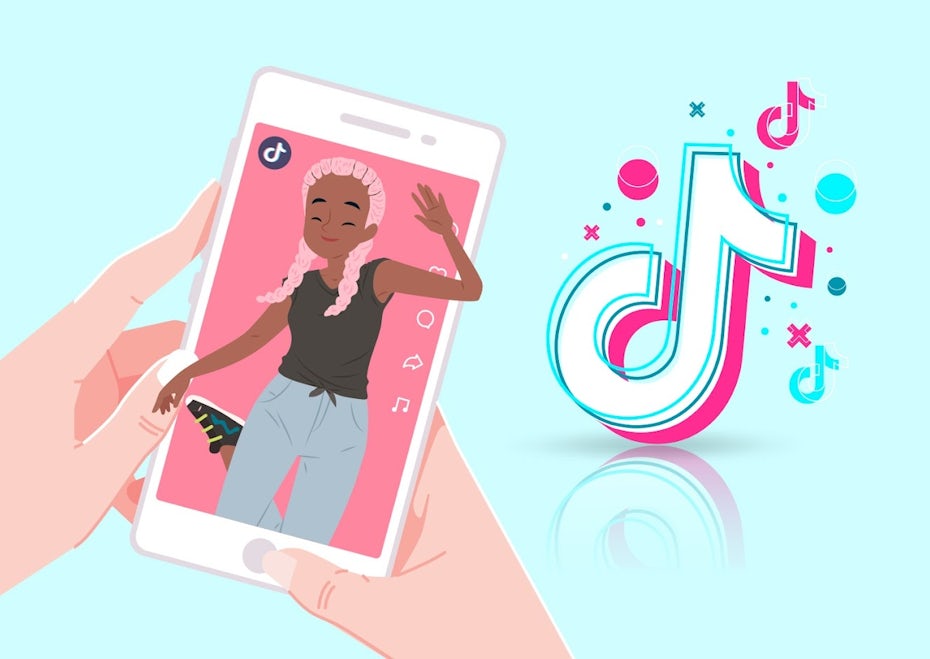 Illustration by OrangeCrush
Illustration by OrangeCrush
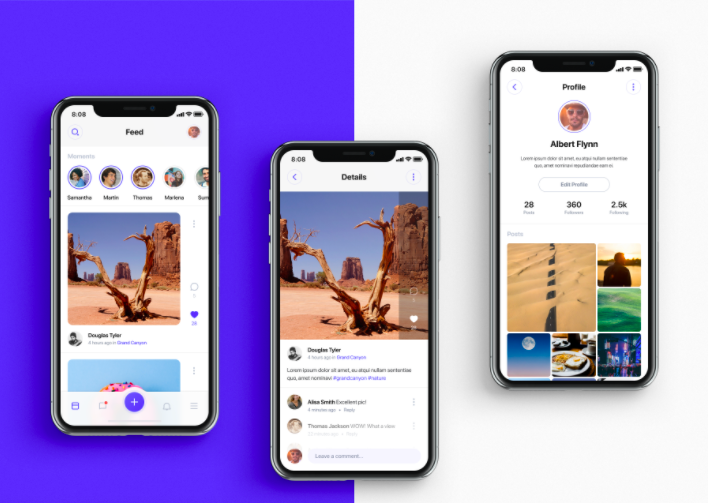 By R • Batinic
By R • Batinic
Short videos emphasize the fast-paced way in which we consume content and highlights the need for simple and succinct messages or engaging content that asks us to participate—whether it’s learning a new dance, joining a challenge, or participating in surveys and polls.
The great thing about these short videos is that everyone has the ability to put together a quick video that isn’t super polished through their phone. Not only that, but these short engaging video content are candid, behind-the-scenes, DIY, real stories and have a more unpolished look are what younger consumers want.
[Consumers are] beginning to place more value on the authenticity and relatability of the content they’re consuming.
- Kelsie Rimmer, envato.com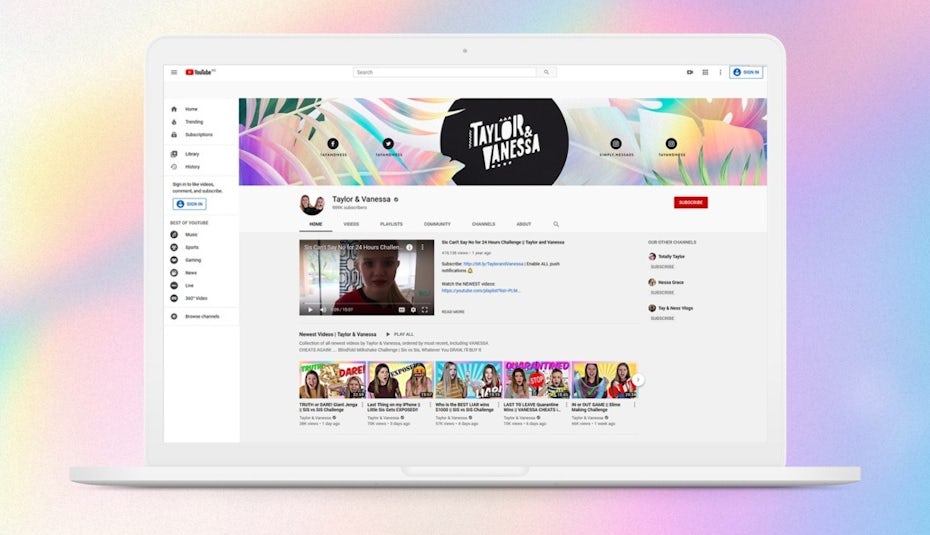 By JStefa
By JStefa
2. Tell a real story
—
Storytelling is always key for brand marketing. But when it comes to selling your product in the modern landscape, consumers are tired of just hearing about how you, the brand, believe your goods or services are better than the competition. They want to know how have you delivered on your promises in a way that has lived up to their needs and expectations. By Illia Kolesnyk
By Illia Kolesnyk
This doesn’t mean brands should take a step back and let their reviews do the talking. Rather, your marketing should shift its focus to storytelling—don’t just tell the consumer the benefits of their product or why it’s better than their competitors, businesses should show through stories and customer testimonials how the product or service can help to solve a specific problem.
Storytelling is the new way of marketing. It won’t sell directly, but it will make your customers think, “Damn, maybe I should try this out.”
- Edgaras Katinas, Better Marketing via Medium
It might not result in direct sales, but it’s a great way to put your brand front-and-center in the minds of consumers who are considering a specific issue. That way, when they face that issue you’ll be the first one they turn to.
3. Focus on your audience
—
Over a year of lockdowns has seen social media users grow fatigued, anxious and sometimes depressed by the constant barrage of content in their feeds. Some have even bitten the bullet and deactivated their accounts. Those who remain on face the heavy stream of ads, campaigns and news that flood their social feeds each day and to say it’s saturated would be an understatement.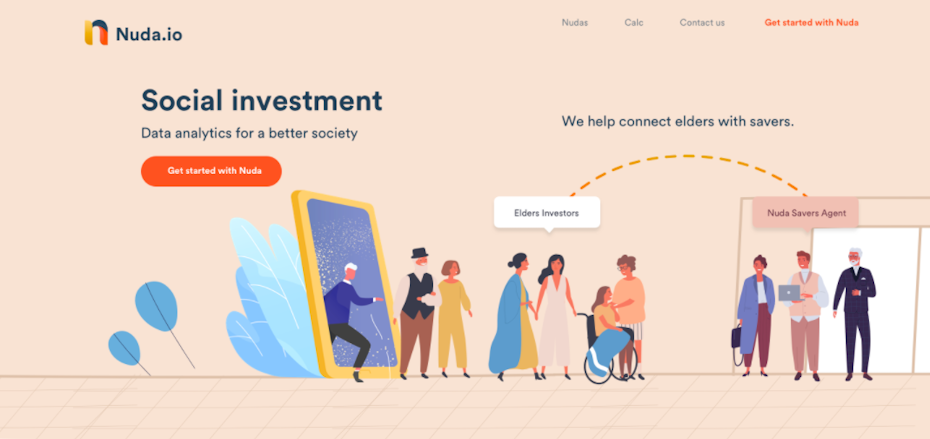 By Adam Muflihun.
By Adam Muflihun.
Be mindful of just how many sales-y posts each person comes up against in a two-minute scroll, and consider how and why yours would cut through the noise. Focus your strategy on engaging with your existing audience and building your database, and you’ll find your messaging reaches those who are most interested in what you do.
As the digital landscape keeps changing consumers are becoming increasingly selective about the media they receive and consume, and as such their expectations are high—don’t be one of the accounts that get unfollowed.
4. Privacy, transparency and trust-building
—
Digital advertising is in overload, and it’s making consumers ever more suspicious of the content they’re targeted with. This is why, in 2022, digital marketers should be preparing for tighter privacy restrictions that will alter the way they can track their users’ behavior.
Google actually announced its curtailing of third-party cookies by 2023. This means many marketers and advertisers are going to need to reevaluate their strategies. By Adam Muflihun.
By Adam Muflihun.
But this is not the end of data-driven content or marketing. It’s not even the end of targeted advertising. If you’re looking for a positive spin to cast on this upheaval of digital marketing monopolies as we know them, consider it this way: it’s the beginning of a new era of trust and transparency between company and consumer. Communicate with customers about what data you are collecting and for what reasons. Make it easy and accessible to opt-out at any point. And don’t collect any data beyond what you need.
As we’ve already mentioned, consumers are more into “keeping it real” than ever before, if you embrace this new direction of digital marketing it’s likely to produce great results for your customer relationships.
 Illustration by OrangeCrush
Illustration by OrangeCrushThe start of the year saw the continuing rise of TikTok, which has now taken over all other platforms as the leading social media channel among Gen Z users. NFTs and cryptocurrencies continued their momentum, sparking conversations about the future of finance. Google announced it would phase out third-party cookies by 2023, leaving advertisers and digital marketers under two years to navigate new channels to reach their target consumers. And, most recently, Facebook changed its name to Meta in a nod to the company’s ambition to embrace the metaverse, a 3D virtual world.
All in all, there’s a lot of new and exciting developments in the digital world that will impact the way we communicate with our audience. To help digest and navigate the year ahead, we’ve broken down the key digital marketing trends to be aware of in 2022.
Here are the 9 digital marketing trends to get ahead of in 2022:
—
Short, DIY videos
Tell a real story
Focus on your audience
Privacy, transparency and trust-building
Personalization
Content segmentation
Conversational marketing and quality interactions
Artificial intelligence in digital marketing
NFTs and crypto in social media ecommerce
1. Short, DIY videos
TikTok has shifted the landscape of social media away from status updates and curated photo grids in favor of short video posts. It didn’t take long for other platforms to jump on the bandwagon, with Instagram launching its Reels feature and Youtube leaning into ‘shorts.’
 Illustration by OrangeCrush
Illustration by OrangeCrush By R • Batinic
By R • BatinicShort videos emphasize the fast-paced way in which we consume content and highlights the need for simple and succinct messages or engaging content that asks us to participate—whether it’s learning a new dance, joining a challenge, or participating in surveys and polls.
The great thing about these short videos is that everyone has the ability to put together a quick video that isn’t super polished through their phone. Not only that, but these short engaging video content are candid, behind-the-scenes, DIY, real stories and have a more unpolished look are what younger consumers want.
[Consumers are] beginning to place more value on the authenticity and relatability of the content they’re consuming.
- Kelsie Rimmer, envato.com
 By JStefa
By JStefa2. Tell a real story
—
Storytelling is always key for brand marketing. But when it comes to selling your product in the modern landscape, consumers are tired of just hearing about how you, the brand, believe your goods or services are better than the competition. They want to know how have you delivered on your promises in a way that has lived up to their needs and expectations.
 By Illia Kolesnyk
By Illia KolesnykThis doesn’t mean brands should take a step back and let their reviews do the talking. Rather, your marketing should shift its focus to storytelling—don’t just tell the consumer the benefits of their product or why it’s better than their competitors, businesses should show through stories and customer testimonials how the product or service can help to solve a specific problem.
Storytelling is the new way of marketing. It won’t sell directly, but it will make your customers think, “Damn, maybe I should try this out.”
- Edgaras Katinas, Better Marketing via Medium
It might not result in direct sales, but it’s a great way to put your brand front-and-center in the minds of consumers who are considering a specific issue. That way, when they face that issue you’ll be the first one they turn to.
3. Focus on your audience
—
Over a year of lockdowns has seen social media users grow fatigued, anxious and sometimes depressed by the constant barrage of content in their feeds. Some have even bitten the bullet and deactivated their accounts. Those who remain on face the heavy stream of ads, campaigns and news that flood their social feeds each day and to say it’s saturated would be an understatement.
 By Adam Muflihun.
By Adam Muflihun.Be mindful of just how many sales-y posts each person comes up against in a two-minute scroll, and consider how and why yours would cut through the noise. Focus your strategy on engaging with your existing audience and building your database, and you’ll find your messaging reaches those who are most interested in what you do.
As the digital landscape keeps changing consumers are becoming increasingly selective about the media they receive and consume, and as such their expectations are high—don’t be one of the accounts that get unfollowed.
4. Privacy, transparency and trust-building
—
Digital advertising is in overload, and it’s making consumers ever more suspicious of the content they’re targeted with. This is why, in 2022, digital marketers should be preparing for tighter privacy restrictions that will alter the way they can track their users’ behavior.
Google actually announced its curtailing of third-party cookies by 2023. This means many marketers and advertisers are going to need to reevaluate their strategies.
 By Adam Muflihun.
By Adam Muflihun.But this is not the end of data-driven content or marketing. It’s not even the end of targeted advertising. If you’re looking for a positive spin to cast on this upheaval of digital marketing monopolies as we know them, consider it this way: it’s the beginning of a new era of trust and transparency between company and consumer. Communicate with customers about what data you are collecting and for what reasons. Make it easy and accessible to opt-out at any point. And don’t collect any data beyond what you need.
As we’ve already mentioned, consumers are more into “keeping it real” than ever before, if you embrace this new direction of digital marketing it’s likely to produce great results for your customer relationships.
5. Personalization-
Personalization is going to play a big role in 2022. Rather than catch-all content that casts a wide net in the hope that it appeals to as many people as it can, creating specific advertising that caters to your audience will generate more fruitful results. But it’s not just the content you need to get right. Making sure your audience receives those adverts at the right time and place is crucial to engagement in an oversaturated landscape.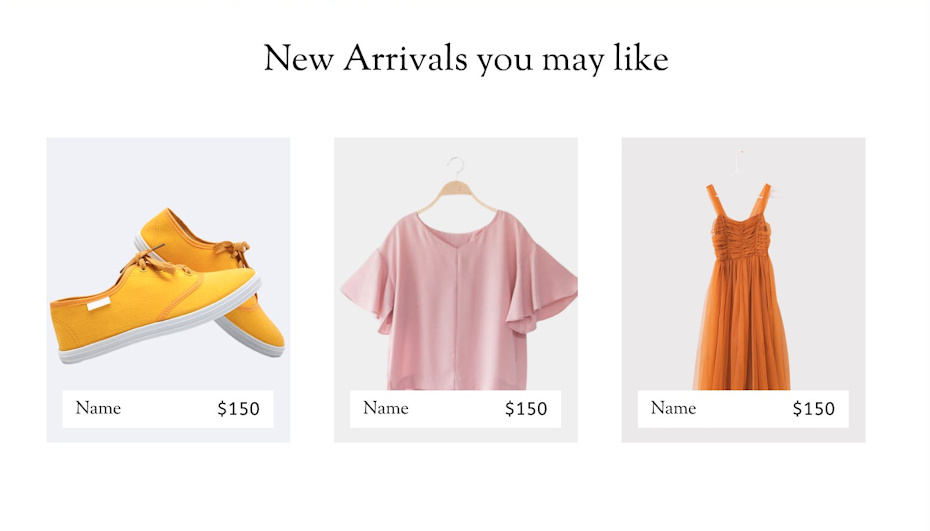 By Nagen
By Nagen
Taking the time to understand the platforms your audience uses, and how they use them, means you can create personalized messaging based on each demographic. This will ensure your message reaches the right audience in the way that is most enticing to them will make your ad spend go further, and could lead to increased customer loyalty.
It’s not just tailoring your marketing efforts for each social media platform, it’s also a consideration for different locations, and cultural associations, even if you’re marketing the same product. Because the consumers viewing your campaign at different touchpoints will be enticed by different content, at different times, in different ways. Trust us: it’s worth the time and effort to make your audience feel seen and understood.
6. Content segmentation
-Segmentation has been around for a while, most will use them for segmenting customers, which means to target customers with similar demographics, or shared interests. And it’s common practice to have segmentations of forms of communications like e-newsletters, news and updates, or offers and promotions.
But moving beyond the standard opt-in or -out marketing strategies, brands should be looking to more detailed and considerate tagging of their email content that allows a user to actually opt-out of receiving certain kinds of content. By Stefanosp
By Stefanosp
A great example of content segmentation in action is Bloom and Wild, a flower company that allows its customers to opt-out of content relating to sensitive occasions like Mother’s Day and Father’s Day. And in 2019, they launched the Thoughtful Marketing Movement, which is founded on the principle of “treating customers with the same care you would give your own friends and family.”
Just think how many people who don’t celebrate Christmas are spammed with festive marketing every December: it doesn’t make a great impression in a digital world that’s becoming increasingly personalized.
Personalization is going to play a big role in 2022. Rather than catch-all content that casts a wide net in the hope that it appeals to as many people as it can, creating specific advertising that caters to your audience will generate more fruitful results. But it’s not just the content you need to get right. Making sure your audience receives those adverts at the right time and place is crucial to engagement in an oversaturated landscape.
 By Nagen
By NagenTaking the time to understand the platforms your audience uses, and how they use them, means you can create personalized messaging based on each demographic. This will ensure your message reaches the right audience in the way that is most enticing to them will make your ad spend go further, and could lead to increased customer loyalty.
It’s not just tailoring your marketing efforts for each social media platform, it’s also a consideration for different locations, and cultural associations, even if you’re marketing the same product. Because the consumers viewing your campaign at different touchpoints will be enticed by different content, at different times, in different ways. Trust us: it’s worth the time and effort to make your audience feel seen and understood.
6. Content segmentation
-Segmentation has been around for a while, most will use them for segmenting customers, which means to target customers with similar demographics, or shared interests. And it’s common practice to have segmentations of forms of communications like e-newsletters, news and updates, or offers and promotions.
But moving beyond the standard opt-in or -out marketing strategies, brands should be looking to more detailed and considerate tagging of their email content that allows a user to actually opt-out of receiving certain kinds of content.
 By Stefanosp
By StefanospA great example of content segmentation in action is Bloom and Wild, a flower company that allows its customers to opt-out of content relating to sensitive occasions like Mother’s Day and Father’s Day. And in 2019, they launched the Thoughtful Marketing Movement, which is founded on the principle of “treating customers with the same care you would give your own friends and family.”
Just think how many people who don’t celebrate Christmas are spammed with festive marketing every December: it doesn’t make a great impression in a digital world that’s becoming increasingly personalized.
7. Conversational marketing and quality interactions
—Brands have been communicating with their customers for years, so conversational marketing isn’t anything new. But with the rise of social media and chatbots, this kind of conversational marketing is growing on an even larger scale and changing the landscape of how businesses have interactions with their customers.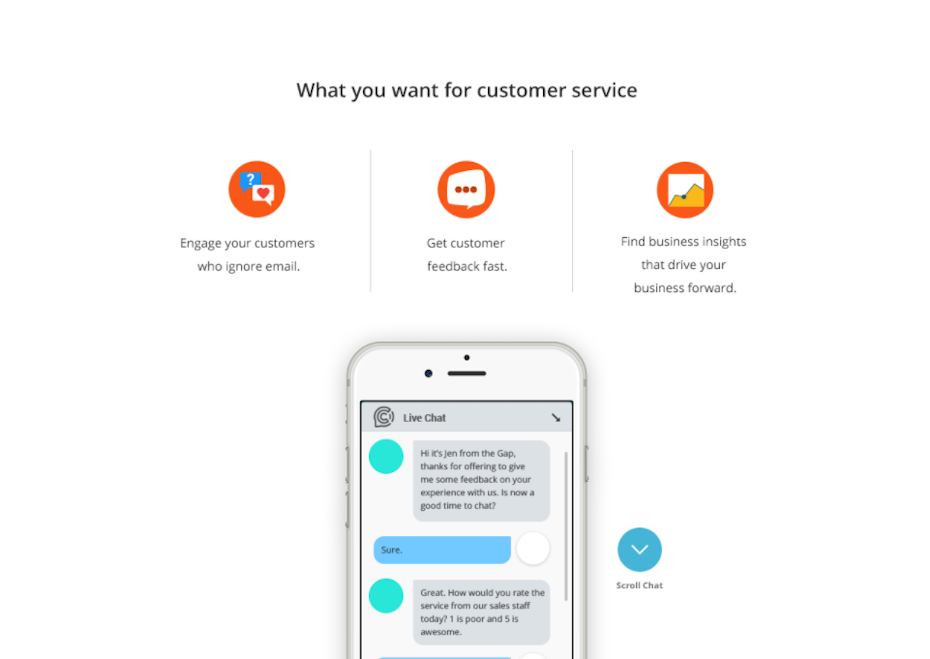 By Adam Muflihun.
By Adam Muflihun.
An increased interest in conversational marketing probably comes down to the shift in consumer behaviors that have been rapidly advanced by technology in recent years—namely, the expectation of instant and direct messaging in real-time, whether that’s with friends, colleagues, or companies. And with chatbots playing a larger role, these conversations can happen on a larger scale, faster and more seamlessly than ever before. With this comes large volumes of data that helps to understand customers’ needs and expectations.
We can have direct, one-to-one conversations with individual customers on their timeline—not ours.
- Alicia Collins via Hubspot
This not only boosts the brand’s relatability but provides an overall positive and fulfilling experience for the customer. But it’s a tricky space to own: make sure you know exactly what your customer expects and what their needs are so that conversation doesn’t derail or be unhelpful.
8. Artificial intelligence in digital marketing
—In recent years, advancements in Artificial intelligence (AI) have led to more intuitive reporting, automating general marketing tasks like monitoring site traffic and boosting search engine optimization for organic reach. But rather than focusing on what we already gained from AI, it’s time to look to the future and how it impacts digital marketing.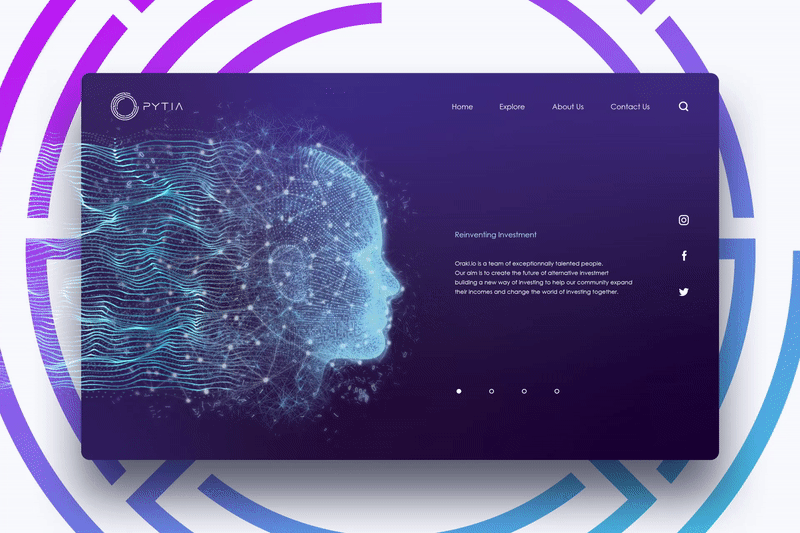 By arthean
By arthean
As AI technology advances so do its capabilities, moving from automated tasks and campaigns to being able to predict what customers are likely to want next. AI has the ability to analyze more data, more quickly, than we do as humans. For this reason, it’s able to take the large data set that’s there to analyze the purchase history and behavior of customers. Then, be able to suggest a specific item or offer, or even a personalized advertisement.
Using AI to predict your customer’s next move means you can target them with the product or service they need, right when they need it. This kind of targeting will lead to high conversion rates and the sense that you understand your customers and their needs without being intrusive or overwhelming them with irrelevant targeting.
9. NFTs and crypto in social media ecommerce
Even if you don’t invest in crypto yourself, the rise of online currencies and NFTs have been near impossible to miss over the past few years. On the surface, it might not sound like a trend that affects your marketing strategy—but that’s not the kind of passive thinking we’re here for in 2022! By Risang Kuncoro via Dribbble
By Risang Kuncoro via Dribbble
With social platforms like Twitter taking steps to integrate cryptocurrency payments, and a rising trend for display tools that showcase in-app NFT purchases, now is the time to consider how your brand can jump on the bandwagon. Facebook is already promoting the use of NFT display options and avatars and we expect to see more and more companies taking a step in this direction.
The focus with NFTs and cryptocurrency is to think about how to sell the brand beyond products and services, and potentially the brand itself and the ethos it carries.
Ready for digital marketing in 2022?
—
So there it is: your handy guide to the top digital marketing trends that we’re expecting to make a splash in 2022. They’re hard to ignore, and you won’t want to. Keeping on top of these trends will be the best way to stay competitive, grow and secure customer loyalty.
From NFTs to AI to data privacy, tech continues to take the lead in 2022. It’s going to be a big year for advancements in technology, marketing tools and forward-thinking strategies so if you’re moving into the new year with any resolutions, they should be focused on your agility, flexibility and openness to changing with the times.
—Brands have been communicating with their customers for years, so conversational marketing isn’t anything new. But with the rise of social media and chatbots, this kind of conversational marketing is growing on an even larger scale and changing the landscape of how businesses have interactions with their customers.
 By Adam Muflihun.
By Adam Muflihun.An increased interest in conversational marketing probably comes down to the shift in consumer behaviors that have been rapidly advanced by technology in recent years—namely, the expectation of instant and direct messaging in real-time, whether that’s with friends, colleagues, or companies. And with chatbots playing a larger role, these conversations can happen on a larger scale, faster and more seamlessly than ever before. With this comes large volumes of data that helps to understand customers’ needs and expectations.
We can have direct, one-to-one conversations with individual customers on their timeline—not ours.
- Alicia Collins via Hubspot
This not only boosts the brand’s relatability but provides an overall positive and fulfilling experience for the customer. But it’s a tricky space to own: make sure you know exactly what your customer expects and what their needs are so that conversation doesn’t derail or be unhelpful.
8. Artificial intelligence in digital marketing
—In recent years, advancements in Artificial intelligence (AI) have led to more intuitive reporting, automating general marketing tasks like monitoring site traffic and boosting search engine optimization for organic reach. But rather than focusing on what we already gained from AI, it’s time to look to the future and how it impacts digital marketing.
 By arthean
By artheanAs AI technology advances so do its capabilities, moving from automated tasks and campaigns to being able to predict what customers are likely to want next. AI has the ability to analyze more data, more quickly, than we do as humans. For this reason, it’s able to take the large data set that’s there to analyze the purchase history and behavior of customers. Then, be able to suggest a specific item or offer, or even a personalized advertisement.
Using AI to predict your customer’s next move means you can target them with the product or service they need, right when they need it. This kind of targeting will lead to high conversion rates and the sense that you understand your customers and their needs without being intrusive or overwhelming them with irrelevant targeting.
9. NFTs and crypto in social media ecommerce
Even if you don’t invest in crypto yourself, the rise of online currencies and NFTs have been near impossible to miss over the past few years. On the surface, it might not sound like a trend that affects your marketing strategy—but that’s not the kind of passive thinking we’re here for in 2022!
 By Risang Kuncoro via Dribbble
By Risang Kuncoro via DribbbleWith social platforms like Twitter taking steps to integrate cryptocurrency payments, and a rising trend for display tools that showcase in-app NFT purchases, now is the time to consider how your brand can jump on the bandwagon. Facebook is already promoting the use of NFT display options and avatars and we expect to see more and more companies taking a step in this direction.
The focus with NFTs and cryptocurrency is to think about how to sell the brand beyond products and services, and potentially the brand itself and the ethos it carries.
Ready for digital marketing in 2022?
—
So there it is: your handy guide to the top digital marketing trends that we’re expecting to make a splash in 2022. They’re hard to ignore, and you won’t want to. Keeping on top of these trends will be the best way to stay competitive, grow and secure customer loyalty.
From NFTs to AI to data privacy, tech continues to take the lead in 2022. It’s going to be a big year for advancements in technology, marketing tools and forward-thinking strategies so if you’re moving into the new year with any resolutions, they should be focused on your agility, flexibility and openness to changing with the times.
Comments